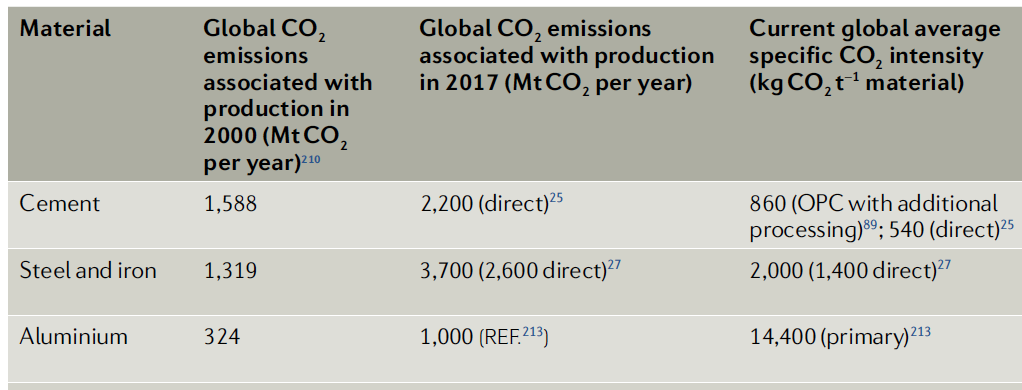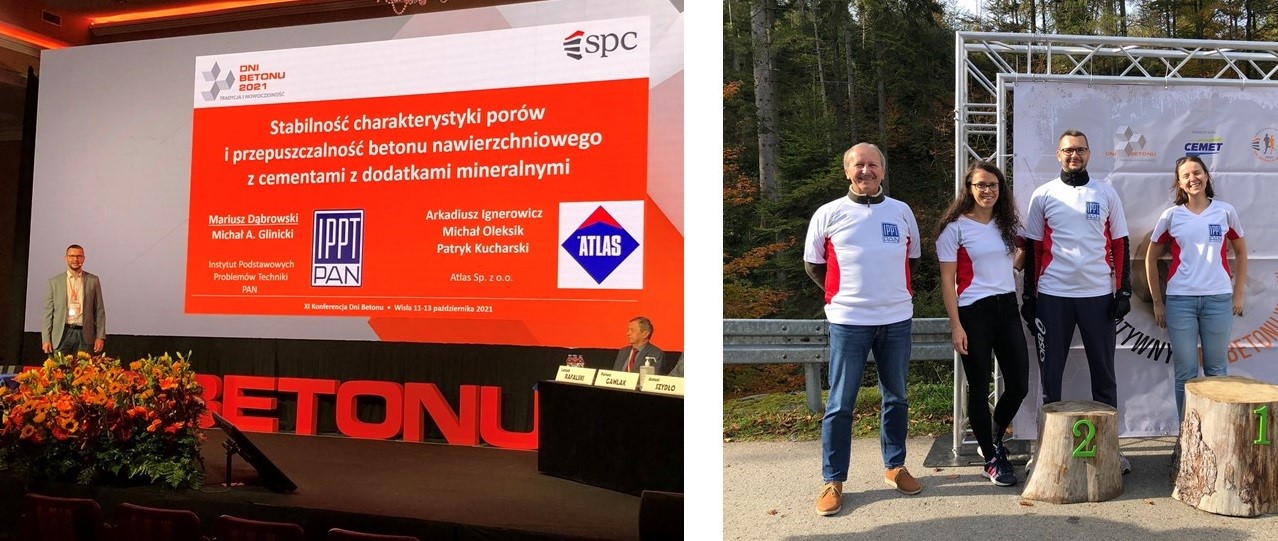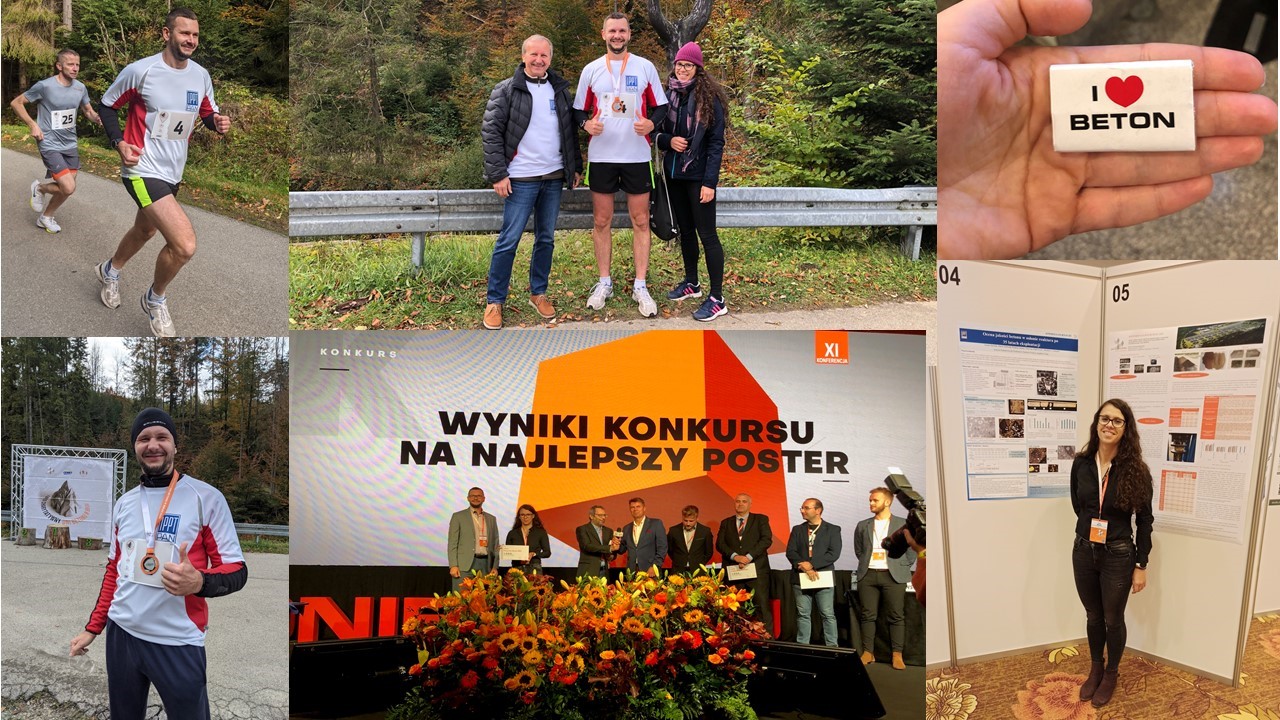On 11-13 October 2021, researchers from the Division of Strain Fields IPPT PAN participated in 11. “Dni Betonu” Conference in Wisła, Poland. The Conference is one of the biggest events meeting science and technology of concrete construction, and it has been organized by the Polish Cement Association since 2000.
Focus on Low-emission Building Materials
Materials science and engineering has been crucial in the process of decarbonizing electricity production sector through the development of materials technologies that allow energy production and storage. Apart from the energy sector, greenhouse gas emission levels for the production of materials are also significant in building construction, transportation infrastructure, production of chemicals and other industry sectors, as reported by the MIT authors in a recent publication1 in “Nature Reviews Materials” journal. This article analyzes decarbonization potential in the cement, metal (including steel and aluminium) and chemical industries with respect to emissions abatement coming from production industries as well as processes of their transformations. Steel and cement are also essential for building infrastructure for the generation of renewable energy and carbon capture processes.
Global CO2 emissions linked to the production of selected building materials1

Increasing pressure exerted on industry to lower its carbon footprint forces cement manufacturers to find new solutions how to reduce their CO2 emissions. Cement plays the dual role in balancing carbon footprint: on the one hand, its mass production significantly contributes to high CO2 emissions, but on the other, products of its hydration processes gradually, in a sponge-like effect, absorb significant amounts of atmospheric CO2 (in the process called concrete carbonation), though the significance of the sponge effect2 requires deeper examination. Also further studies are needed on the influence of radical technological shifts in cement manufacturing processes on the already established relationships between constituents, microstructure, and properties of cement-matrix materials. All these issues constituted the focal points of the 2021 “Dni Betonu” Conference, which on 11-13 October 2021 gathered over 850 participants in Wisła. The event was fully broadcast and attracted at least twice more participants online.
Most of the Conference thematic sessions were dedicated to the use of Portland cement as a potentially low-emission material. Participants discussed new abatement technologies and the carbon footprint impact on the cement production. Conference participants from the part of IPPT included: Aneta Antolik, MSc, Kinga Dziedzic MSc, Mariusz Dąbrowski, PhD, and prof. Michał A. Glinicki from the Division of Strain Fields (PPO), Department of Experimental Mechanics, IPPT PAN.

Mariusz Dąbrowski PhD presented the results of testing the durability and air void microstructure of the materials consisting of radically low Portland cement clinker. His report had been prepared in cooperation with Atlas S.A, a well-known manufacturer of chemical products for the building industry. The team of authors from PPO presented conference posters that covered information on the durability of materials exposed to ionizing irradiation, and the use of gamma rays in the processes corresponding to 3D printing, especially in extraterrestrial locations.
The IPPT PAN scientists brought home two awards. The first prize of 1000zł in cash was awarded to Aneta Antolik, doctoral student, Assoc. Prof. Daria Jóźwiak Niedźwiedzkia, Mariusz Dąbrowski PhD, and prof. Michał A. Glinicki for the best conference poster on the durability of biological shields of a nuclear reactor. Moreover, Mariusz Dąbrowski PhD won 2nd prize in the “Dni Betonu 2021 w biegu” charity run. The 10km run took place a day before the conference and was a real challenge, as the path was difficult and led, partly upwards, along the Czarna Wisełka river. All the registration money was allocated to a Polish foundation for young cancer patients “Na Ratunek Dzieciom z Chorobą Nowotworą” from the Klinika Transplantacji Szpiku, Onkologii i Hematologii Dziecięcej Przylądek Nadziei of the University Clinical Hospital in Wrocław, Poland.

1 Katrin Daehn i in., Innovations to decarbonize materials industries, Nature Review Materials; https://doi.org/10.1038/s41578-021-00376-y; published online 12 October 2021
2 Nature Communications, 11:3777 (2020); https://doi.org/10.1038/s41467-020-17583-w















